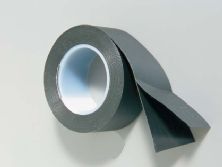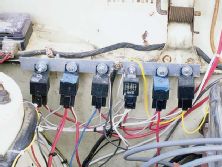Regular readers of this column have probably figured out by now that I can be pretty obsessive about how things are done. It's not that I'm that much of a dork, I've just seen the results of a lot of stuff done incorrectly. I find wiring to be the quickest indicator of whether a car's builder took time to do things right. Having a wire go from here to there conducting electricity is good enough for most amateurs, while true geeks prefer to see everything safe, organized, labeled and protected. I've seen "magic smoke" let out of components, even insulation, and I know of very expensive tuner cars that have burned, thanks to a wiring error.
Furthermore, while anyone can recognize the benefits of being able to remove the oil filter without separating the mounts and lifting the engine (okay, I've never seen that one, I just made it up), fewer people put serviceability near the top of their priority list when assembling their car's electrical system. Suffice it to say I have spent more than half an hour changing a headlight on a low-buck racecar.
One of my pet peeves is self-adhesive PVC electrical tape. In my mind, it is one of those tools that's overused because it is cheap, easy to do and available everywhere. Those are all good qualities, and it's so satisfying to make electrical changes with everything wrapped neatly and tightly.
Here is my basic beef: Like almost any self-adhesive tape, electrical tape has a creep response. It sticks well at first, but over time, it gradually lets go until there is no more force pulling it apart. Go back to those tightly wrapped connections a few days later, and the tape has unwrapped. The end is hanging loose, and where it once was there is now an adhesive shmoo collecting dust and dirt. Worse, the connection may be exposed. Go back a year later and it's a loose roll of brittle plastic more or less stuck to the wire. Self-adhesive electrical tape is lousy when it's warm--and cars get hot. Electrical tape is worthless underhood.
Taking apart and modifying a harness that was wrapped with electrical tape years ago is very unpleasant. The wires and loom underneath will be coated with adhesive shmoo. So will your hands, and anything you've touched or dragged the tape across.
Fortunately, there are much better solutions available. There's heat-shrink tubing, of course, but that is limited to the sizes on hand, and can adjust to a limited range of diameters. Plus, it takes heat to install, which is not always desirable. Self-fusing tape achieves the ideal at which self-adhesive electrical tape aims.
With self-fusing tape, there is no separate adhesive, so there can be no shmoo. The tape bonds to itself. My understanding is, polymer bonds are broken when the material is stretched. When it is wrapped around itself, it is just as easy to reform those bonds with the material in the adjacent layer of tape as within the original layer. Thus, the wrapping becomes a single, homogeneous mass. The result is almost like dipping the connection in plastic, but the process is dry, free of mess, and happens at room temperature. Removing it, if necessary, is just like removing any other insulation, since it sticks only to itself.
As with any generic category of product, there are many different materials, widths, thicknesses, package sizes, and brands to choose from. You should be able to easily choose one that meets your requirements. The downside of self-fusing tape is that it is much more expensive. Still, I consider the cost to be well worth it, at the rate electrical tape is actually consumed. My roll was sold by AMP, a widely distributed manufacturer of electrical connectors and accessories. Another good brand is 3M(TM), the company that aims to be king of anything sticky that comes on a roll. The easiest way to buy self-fusing tape is through an industrial or electronics supply house, either brick-and-mortar near you, or on the Web.


